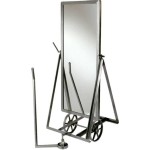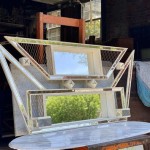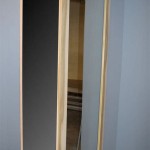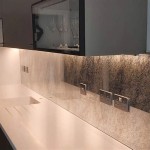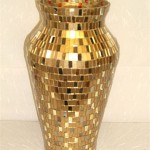How to Take Off a Side Mirror Cover
Removing a side mirror cover can be a necessary step for various car maintenance tasks, such as replacing a broken mirror glass, painting the cover, or accessing the mirror's internal mechanisms. While the specific process varies slightly between car makes and models, the underlying principles remain consistent. This guide provides general instructions and important considerations for safely removing a side mirror cover.
Key Points Before Starting
Understanding these key points will ensure a smoother process and reduce the risk of damaging the cover or the mirror assembly.
- Consult the vehicle’s owner's manual: The manual often provides specific instructions and diagrams related to the side mirror assembly for your particular model. This is the best starting point for accurate guidance.
- Gather necessary tools: Common tools required may include a flathead screwdriver, a trim removal tool, or a small pry bar. The owner's manual will specify the correct tools.
- Work in a well-lit area: Adequate lighting allows for clear visibility of the mirror components and helps prevent accidental damage.
- Protect the surrounding area: Placing a soft cloth or masking tape around the mirror housing can help prevent scratches to the car's paintwork during the removal process.
Locating the Attachment Points
Side mirror covers are typically attached using clips, screws, or a combination of both. Identifying these attachment points is crucial for successful removal without causing breakage.
- Visual inspection: Carefully examine the underside and edges of the mirror cover for visible screws or clips. Look for small gaps or indentations that suggest the presence of hidden clips.
- Gentle probing: If clips are suspected, gently insert a trim removal tool or a small flathead screwdriver into the gap between the cover and the mirror housing. Feel for the resistance of the clips.
- Reference the owner's manual: The manual will often provide diagrams or descriptions of the mirror cover's attachment points, indicating their precise locations.
Releasing the Clips
Once the clips are located, they must be released carefully to avoid breaking them or damaging the cover.
- Use the correct tool: A trim removal tool is specifically designed for this purpose and minimizes the risk of damage. If a trim removal tool is unavailable, a small flathead screwdriver can be used with extreme caution.
- Apply gentle pressure: Insert the tool into the gap beside the clip and apply gentle pressure to pry the clip away from the mirror housing. Avoid excessive force, which can break the clip or damage the surrounding plastic.
- Work systematically: Release the clips one by one, working your way around the perimeter of the mirror cover. Some covers may require releasing clips in a specific sequence, as outlined in the owner's manual.
- Listen for the clicks: As each clip is released, a distinct clicking sound will be heard. This indicates that the clip has disengaged from the housing.
Removing Screws (If Applicable)
If the mirror cover is secured with screws, they must be removed before the cover can be detached.
- Identify the screw type: Determine the type of screwdriver head required for the screws (e.g., Phillips, flathead, Torx). Using the incorrect screwdriver can damage the screw heads.
- Use the correct size screwdriver: Ensure the screwdriver fits snugly into the screw head to prevent stripping.
- Turn counterclockwise: Rotate the screwdriver counterclockwise to loosen and remove the screws. Keep the screws in a safe place to avoid losing them.
Detaching the Cover
With all clips and screws released, the cover can be carefully detached from the mirror housing.
- Gentle pulling: Gently pull the cover away from the mirror housing. It may require a slight rocking or wiggling motion to free it completely.
- Disconnect electrical connectors (if applicable): Some mirror covers incorporate features such as heated mirrors or turn signal indicators. If present, carefully disconnect any electrical connectors before completely removing the cover.
- Inspect the cover and housing: Once removed, inspect the cover for any damage and the housing for any remaining clips or components.
Handling the Cover
Proper handling of the removed cover prevents damage and ensures its reusability.
- Safe storage: Store the cover in a safe place to prevent scratches or breakage, especially if it is being removed for painting or other modifications.
- Clean the cover (if necessary): If the cover requires cleaning, use a mild soap and water solution. Avoid harsh chemicals or abrasive cleaners, which can damage the finish.
By following these guidelines and consulting the owner’s manual, individuals can successfully remove side mirror covers with minimal risk of damage. Remember that patience and careful observation are essential throughout the process.

How To Remove Side Mirror Cap

How To Remove Side View Mirror Cover Evolutionm Mitsubishi Lancer And Evolution Community

How To Remove Side Mirror Cover On Ford Focus Mk3

How To Remove Side Mirror Cover Jaguar Forums Enthusiasts Forum

How To Remove Side View Mirror Cover Evolutionm Mitsubishi Lancer And Evolution Community

3 Ways To Replace A Car S Side View Mirror Wikihow
Removing Side Mirror Cap Without Popping Out The G20 Bmw 3 Series Forum

Change Your Vw Wing Mirror Cap How To

How To Remove Side View Mirror Cover Evolutionm Mitsubishi Lancer And Evolution Community

Side View Mirror Cap Removal Explorer St Forum

